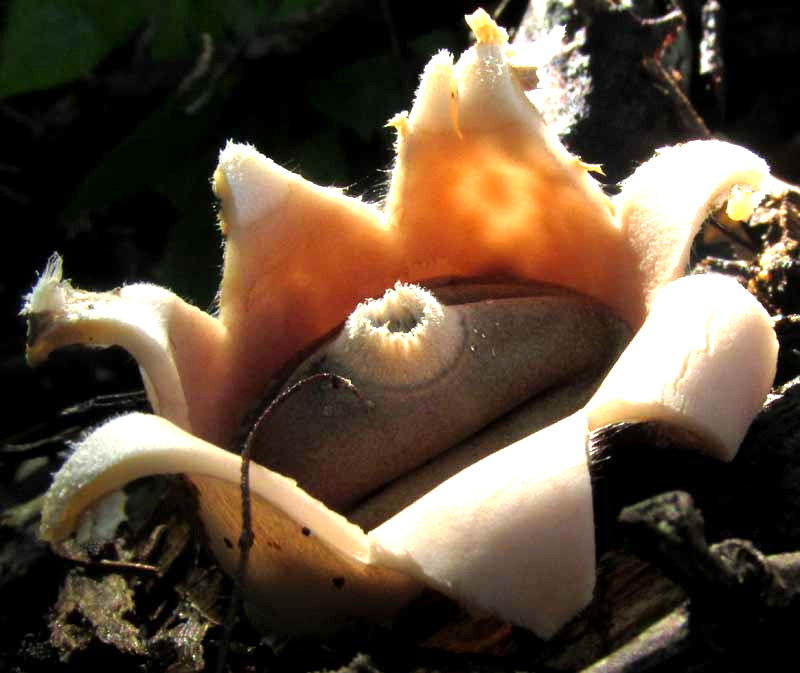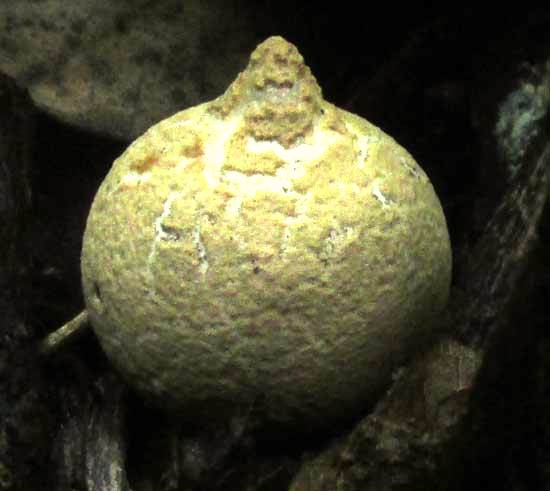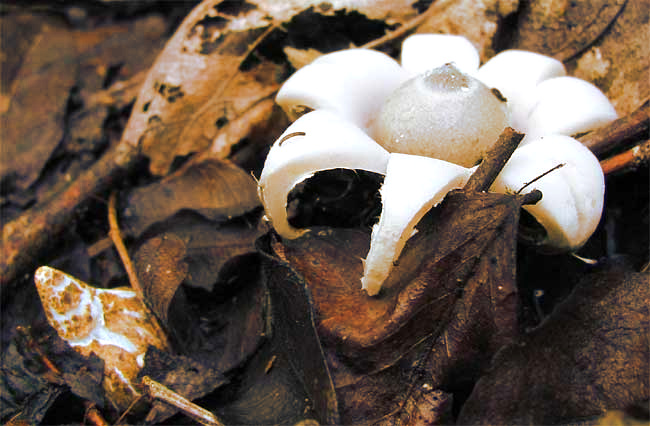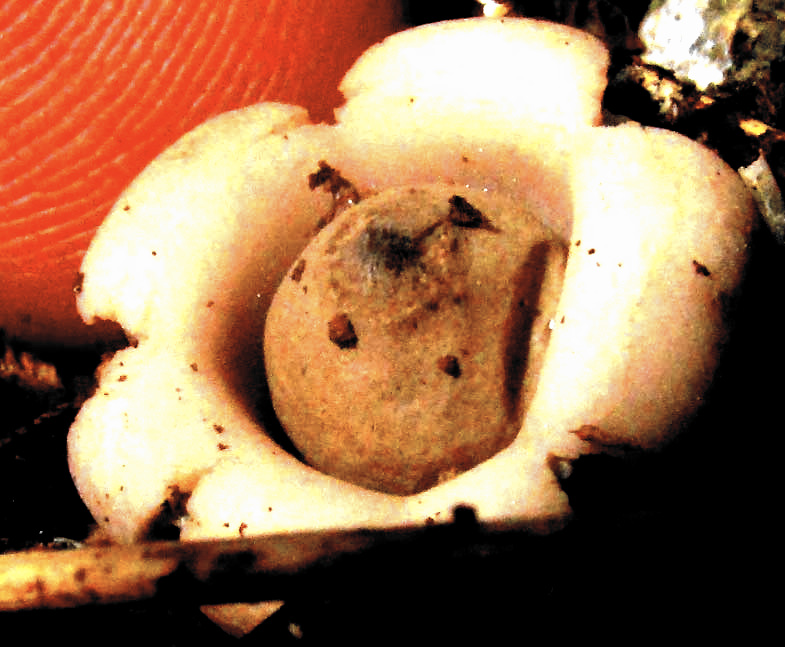Excerpts from Jim Conrad's
Naturalist Newsletter
from the July 30, 2017 Newsletter issued from Rancho Regensis north of Valladolid, Yucatán, MÉXICO;
elevation ~40m (~130 ft), N~20.876°, W~88.170°
EARTHSTAR

With the return of the rainy season mushrooms and other forms of fungi have appeared. In general the arid Yucatan isn't a good place for mushrooms, but the few species that do develop often are interesting. For example, consider the one about an inch across (2.5cm) found growing on wet, decaying wood, shown at the top of this page.
Nearby, a younger member of the same species displayed an earlier stage of development -- the fruiting body before the outer cover split to reveal the spore-filled, bladder-like central part. This is shown below:

From years of paying attention to mushrooms up North, I knew that this was an earthstar, which in rainier areas sometimes are fairly common. Earthstars are essentially puffballs encased in thick skins that, when mature, split so that the parts peel back, as shown in the picture. When the parts are peeled back, reproductive spores are emitted through the hole at the puffball's top.
In general the fungi of Mexico are relatively unknown, so I had little hope of identifying this species. However, it was worth a try. I knew that earthstars are members of the fungus family Geastraceae, in which the dominant genus is Geastrum -- which I figured this one was -- so on the Internet I looked for botanical treatments of Mexican Geastraceae.
Luckily there appeared a 1999 paper in Revista Mexicana de Micología by Evangelina Pérez-Silva and others exactly on the topic of Mexican members of the genus Geastrum.
That excellent paper informs us that 14 species of the genus Geastrum occur in Mexico, and there's a technical key for identifying the species. That key quickly directed me to GEASTRUM SACCATUM, known to occur in the Yucatan. A key field mark is the felt-like covering of the outer skin (the exoperidium).
Geastrum saccatum appears to be widely distributed. I find it listed for both North America and Europe, including in northern areas.
from the October 27, 2008 Newsletter, issued from Yokdzonot, central Yucatan, MEXICO:
EARTHSTAR IN THE YUCATAN

Deep in the forest where trails start petering out the forest grows higher, the shade is heavier and the humidity higher. It smells fungusy, and fungi love the environment. One of the most eye-catching is shown above.
issued on August 22, 2019 from near the forest just west of Tepakán; elev. ~9m (~30 ft), N21.053°, W89.052°; north-central Yucatán state, MÉXICO:
ANOTHER EARTHSTAR IN THE YUCATAN

Another earthstar turns up here in the mid rainy season, after numerous days of afternoon showers and heavy rains. This one appears to be different from others I've seen here, much smaller -- as indicated by my finger in the picture -- about the size of a thumbnail, its radiating "arms" are less slender and sharply pointed, and the bladder's "nipple" from which spores will pass is much less pointed.